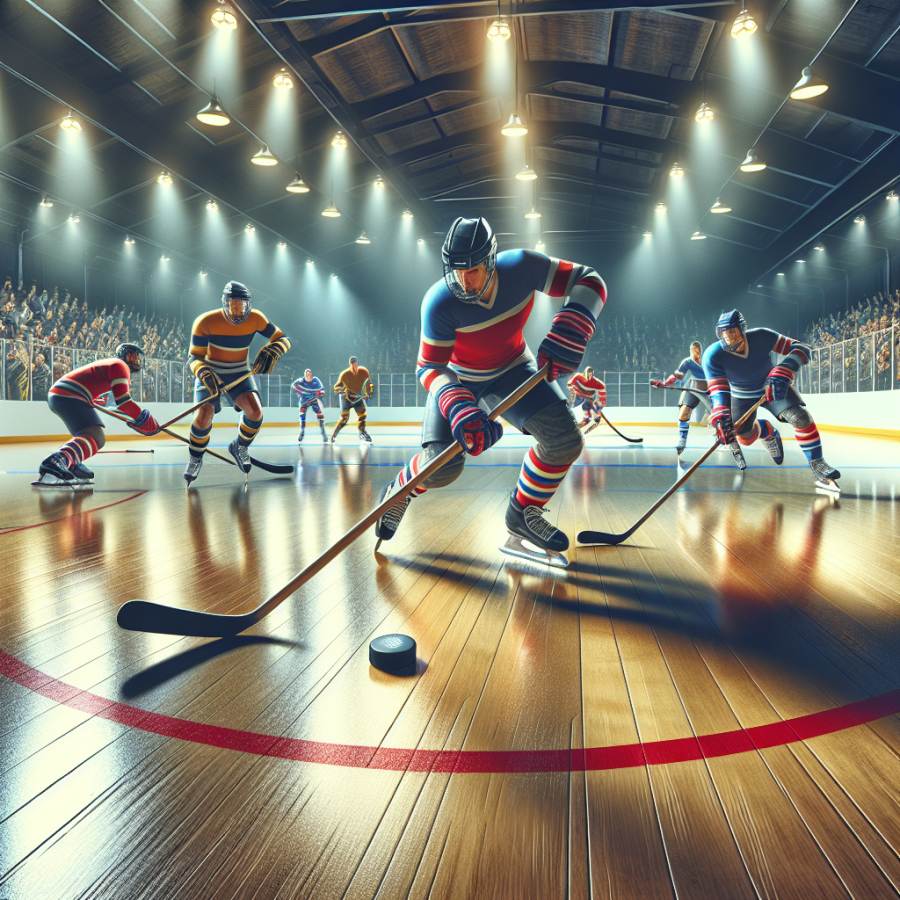Exploring the Dynamic Elements of Rink Hockey: Skating Skills Meets Tactical Play
Rink hockey, also known as roller hockey, seamlessly combines the finesse of skating with the strategic depth of a team sport. This unique blend demands not just physical prowess but also a keen tactical mind from its players. At the heart of this sport are intricate maneuvers, swift passes, and a constant awareness of the shifting dynamics on the rink.
The first layer of this thrilling game is the skating skills required. Athletes must possess exceptional balance and coordination as they navigate the rink at high speeds. Agility is key, allowing players to make quick direction changes to avoid opponents or to align themselves perfectly for a shot or pass. Mastery of different skating techniques, such as crossover turns for enhanced speed during cornering and tight turns for rapid direction changes, is essential. These movements need to be second nature, freeing the players' minds to focus on the game itself rather than their feet.
Beyond individual skill, rink hockey players must also excel in teamwork and tactical play. Success on the rink hinges on each player's ability to read the game, anticipate their opponents' moves, and communicate with teammates without losing a beat. This is where strategies come into play. Teams carefully plan their formations, such as the popular 'diamond' or 'box' configuration, each providing different strengths and vulnerabilities. These formations dictate the players' positioning, impacting coverage on defense and opening opportunities on offense.
Offensive play in rink hockey is not just about speed and skill with the stick; it's about outmaneuvering the opponents through strategic plays. This might involve setting up screens to obscure the goalkeeper's vision, executing feints to bypass defenders, or creating passing lanes through precise movement and positioning. Often, the game's tempo will shift between a swift counter-attack to a more deliberate, controlled progression, as the situation dictates.
Defensively, rink hockey is equally complex. Players must be adept at reading the attackers' intentions to intercept passes or block shots. Defensive skating backward is a critical skill as it allows a player to match the attacker's moves while maintaining a defensive stance. Positioning is crucial to close down angles and limit the attacker's options, forcing them to make a mistake.
Special set-pieces, like penalties and corner shots, add another layer of intrigue. Specialized tactics and rehearsed plays are often executed in these high-pressure situations, requiring precision and cool heads from both those taking and defending these chances.
Read also:
Toe Wrestling: The Quirky Sport Taking Toes to the Mat
From Wheels to Goals: The Strategic Depth of Rink Hockey Unveiled
Rink hockey, also known as roller hockey, combines the speed of skating with the precision of stick handling to create a sport that is as strategic as it is exhilarating. At first glance, the sport’s fast pace can overshadow its strategic depth, but a closer examination reveals a complex game full of tactical nuance.
The foundation of rink hockey strategy begins with player positioning. Much like in soccer or ice hockey, each player has a specific role that includes responsibilities in both offense and defense. The rink is divided into three zones: defense, midfield, and attack, with players shifting positions fluidly as the game progresses. Defenders not only protect their goal but also initiate offensive plays, highlighting the sport’s reliance on versatile skill sets.
Offensive strategy in rink hockey revolves around the creation and exploitation of space. Skilled dribbling and quick passing are essential, as opponents will attempt to close down space and limit shooting opportunities. Teams often employ set plays during free hits or face-offs, aiming to execute well-rehearsed maneuvers that catch the opposition off-guard. The small size of the goal, compared to the size of the ball, demands precision in shot placement, making tactical shooting practice a key part of training.
In terms of defense, players must excel in man-to-man marking or zonal systems to prevent the opposition from finding the back of the net. Anticipation and intercepting passes are just as important as tackling in rink hockey's defense. Goalkeepers, apart from their expected role of shot-stopping, often act as an extra field player, distributing the ball and making crucial decisions under pressure.
Special teams play a significant role in rink hockey, much like in ice hockey. Power plays and penalty kills require careful strategizing and can often be the turning point in a match. A team that excels in these situations gains a significant advantage, with coaches typically having specific players trained for these high-stakes moments.
Effective communication and understanding between teammates are the lifeblood of rink hockey strategy. Players must act as a cohesive unit, making split-second decisions that rely on an unspoken understanding nurtured through hours of practice.
Lastly, player fitness and stamina are inseparable from the strategic elements. Rink hockey demands high-intensity skating for extended periods, which affects how players and coaches approach the game strategically, including player rotations and the timing of substitutions to maintain a fresh and effective presence on the rink.
The Fascinating Dynamics of Rink Hockey
Rink Hockey, also known as Roller Hockey, is a unique sport that seamlessly merges the fast-paced action of skating with the strategic depth of traditional field hockey. Played on quad skates, the game requires athletes to possess a balance of physical agility and mental acuity, as they navigate through opponents on a hard surface armed with a stick and a passion for the game.
Understanding The Rules
One of the key aspects of rink hockey that attracts both players and spectators is its comprehensive rulebook, which ensures a game that is both exciting and fair. Teams consist of five players each, including a goaltender, and the objective, similar to other forms of hockey, is to score goals by getting the ball into the opponent's net. The game is played over two halves, each ranging from 20 to 25 minutes, depending on the league or level of play.
The Significance of Strategy
Strategy lies at the heart of rink hockey. Coaches and players must continuously adapt their tactics in response to their opponents’ actions. Positional play is critical, with players often switching between offense and defense rapidly. Teams must decide when to press aggressively or when to hold back and defend. Set plays, such as corner shots and penalty strokes, also require careful planning and execution.
Equipment and Gear
In rink hockey, the right equipment is integral to a player's performance and safety. This includes the skates, which are specifically designed for the sport, with a lower center of gravity and enhanced maneuverability. The sticks, made of wood or composite materials, are curved at the end to facilitate ball control and shooting. Safety gear is paramount, with players donning helmets, shin guards, elbow pads, and often gloves to protect against falls and collisions.
Training and Conditioning
Professional rink hockey players undergo a rigorous training regimen to stay at the top of their game. In addition to on-rink practice focused on drills, scrimmages, and skill development, players invest considerable time in off-rink conditioning. Strength training, endurance workouts, and agility exercises are essential components of a rink hockey athlete's routine, contributing to their capability of performing at peak levels throughout an entire game.
The Role of Goalkeepers
Goalkeepers are the anchors of any rink hockey team. Unlike in other forms of hockey, rink hockey goalies do not use large pads to block the ball.




